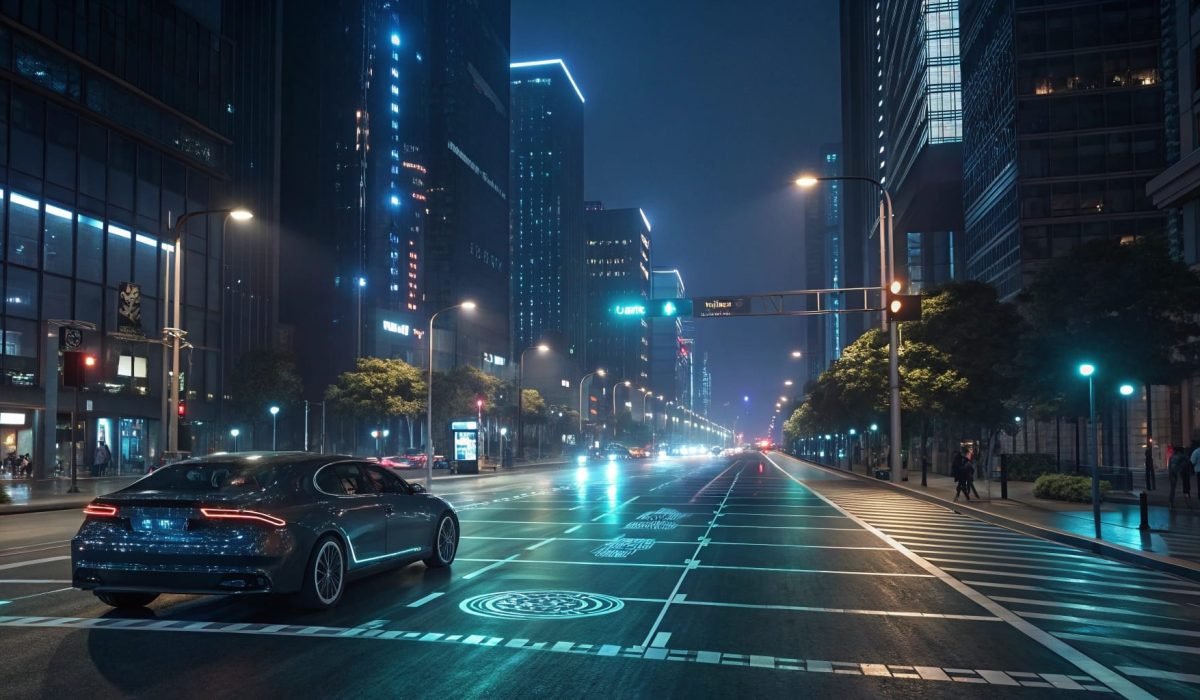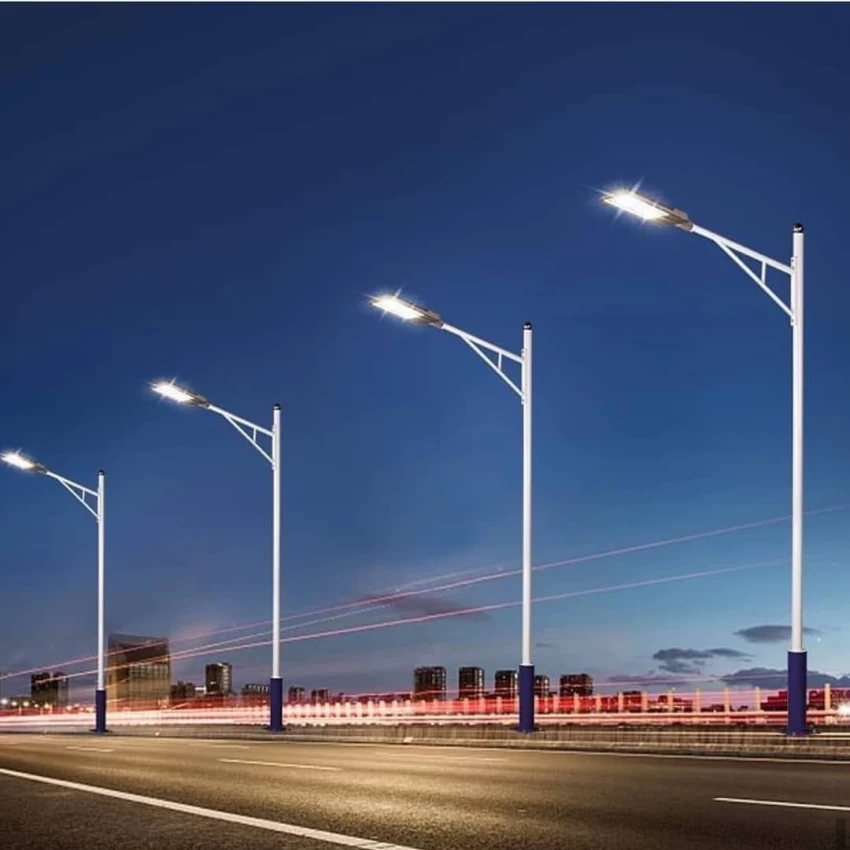Efficient street lighting is crucial for urban safety, energy conservation, and aesthetics. Over time, control systems have evolved from manual operation to automated and smart lighting solutions. But which system is the best?
Street lighting control systems can be broadly classified into group (segmented) control and individual control. Group control offers cost-effectiveness and simplicity, while individual control provides flexibility, energy savings, and smart city integration.
Understanding these control systems helps cities optimize energy use, reduce maintenance costs, and enhance public lighting efficiency.
Historical Evolution of Street Lighting Control
Street lighting control has progressed from manual operation to fully automated systems, improving efficiency and reliability.
Early Manual Systems
| Period | Lighting Type | Control Method |
|---|---|---|
| Pre-19th Century | Torches, candles, oil lamps | Manual lighting and extinguishing |
| 19th Century | Gas lamps | Centralized manual control |
Introduction of Electric Lighting
| Period | Advancement | Impact |
|---|---|---|
| Early 20th Century | Electrical street lights | Simple on/off switches introduced |
| Mid-20th Century | Centralized control | Allowed more convenient management |
The Rise of Electronic Control
| Period | Advancement | Key Feature |
|---|---|---|
| 1950s–1970s | Photo relays | Automated switching based on sunlight detection |
| 1980s–2000s | Time relays | Pre-programmed schedules for turning lights on/off |
| Present | Smart IoT-based control | Remote monitoring, dimming, and adaptive lighting |
Modern street lighting systems now use advanced control mechanisms to optimize performance and energy use.
Group vs. Individual Street Lighting Control: Key Differences
Street lighting control is mainly categorized into group control and individual control, each with unique advantages and limitations.
Group Control (Segmented Control)
How It Works:
- A set of streetlights is controlled by a single relay or a centralized system.
- A group of lights turns on or off together, following pre-set schedules.
Advantages
✅ Scheduled Control: Lights operate based on predefined schedules, optimizing energy use.
✅ Cost-Effective Implementation: No need for individual controllers, reducing initial costs.
✅ Energy Efficiency: Allows partial deactivation of lighting groups during low-traffic hours.
✅ Diagnostic Features: Faulty groups can be identified for efficient repairs.
✅ Quick Deployment: Compatible with existing lighting infrastructure, minimizing disruptions.
Disadvantages
❌ Lack of Precision: Cannot detect or control individual faulty lights within a group.
❌ Limited Energy-Saving Capabilities: Cannot dim or adjust lights based on real-time conditions.
❌ Reduced Flexibility: Less adaptable for mixed-use urban environments.
❌ Rarely Used in the US: Historical infrastructure constraints have limited its adoption.
Individual Control (Using GSM Nodes or IoT Technology)
How It Works:
- Each streetlight has an independent controller.
- Can be integrated with sensors, dimming functions, and IoT networks.
Advantages
✅ Full Customization: Allows independent control of each streetlight.
✅ Advanced Energy Savings: Supports dimming, motion sensors, and adaptive brightness.
✅ Greater Flexibility: Ideal for areas with varying lighting needs.
✅ Smart City Integration: Enables remote monitoring, real-time adjustments, and data-driven optimizations.
Disadvantages
❌ Higher Implementation Costs: Requires installing individual controllers on each fixture.
❌ Complex Maintenance: Managing a large-scale network of controlled streetlights can be challenging.
❌ Best for New Installations: Retrofitting older systems can be expensive.
Challenges and Innovations in Modern Street Lighting Control
Despite advancements, modern lighting control systems face technical and operational challenges that require innovative solutions.
Common Issues
| Problem | Cause | Solution |
|---|---|---|
| Photo Relays Sensitivity | Dust, external light interference | Use smart sensors with AI-based filtering |
| Time Relays and Timers | Fixed schedules may not align with real conditions | Implement adaptive lighting control |
| Power Consumption | Inefficient lighting use | Introduce dimmable LED streetlights |
Smart Systems & IoT Advancements
| Innovation | Function | Benefit |
|---|---|---|
| GSM Nodes | Wireless communication between streetlights | Enables real-time control and failure detection |
| Cloud-Based Monitoring | Centralized lighting management | Reduces maintenance costs and improves efficiency |
| AI-Driven Lighting Optimization | Analyzes traffic, weather, and pedestrian activity | Maximizes energy savings while maintaining safety |
These advancements make modern street lighting more efficient and cost-effective.
Selecting the Right Street Lighting Control System
Choosing between group and individual control depends on infrastructure, energy goals, and budget.
Factors to Consider
| Factor | Group Control | Individual Control |
|---|---|---|
| Urban Infrastructure | Best for older cities with existing wired systems | Ideal for new installations with smart technology |
| Energy Efficiency Goals | Moderate efficiency with scheduled operation | High efficiency with adaptive brightness control |
| Budget & Maintenance Capacity | Lower initial costs and easier maintenance | Higher upfront costs but long-term savings |
Hybrid Approach: Combining Group & Individual Control
| Area Type | Recommended Control System | Reason |
|---|---|---|
| Residential & Low-Traffic Areas | Group Control | Cost-effective illumination with scheduled lighting |
| High-Traffic & Smart City Zones | Individual Control | Adaptive lighting and real-time monitoring |
| Industrial & Special Use Areas | Hybrid Approach | Custom lighting needs based on traffic and security |
By combining both control methods, cities can optimize costs and performance.
Conclusion: Striking a Balance Between Cost and Efficiency
There is no one-size-fits-all solution for street lighting control. While group control is cost-effective and easy to implement, individual control provides flexibility, energy savings, and integration with smart city infrastructure.
The best approach is a hybrid model, leveraging group control in less critical areas and individual control in high-traffic or smart city zones.
As technology advances, IoT-powered systems and AI-driven optimizations will redefine street lighting, making urban areas safer, greener, and more efficient.






